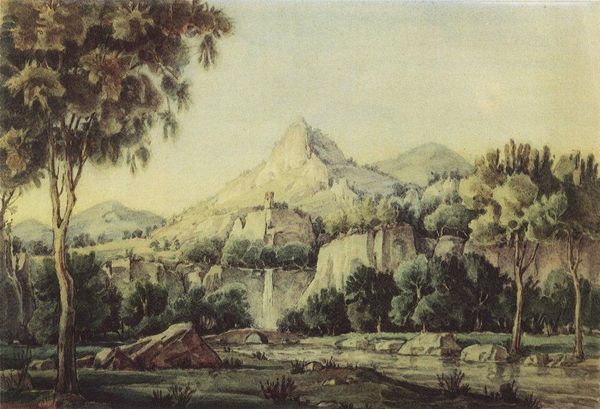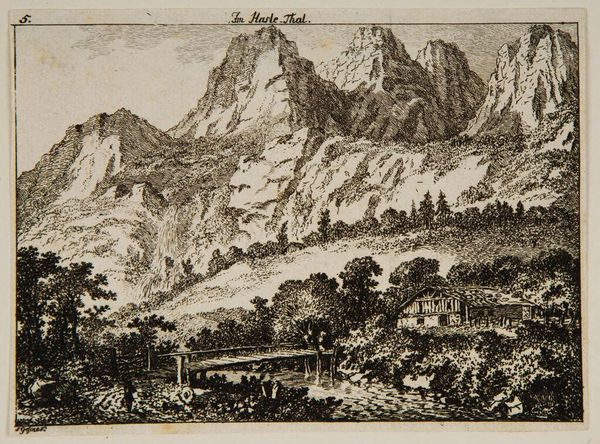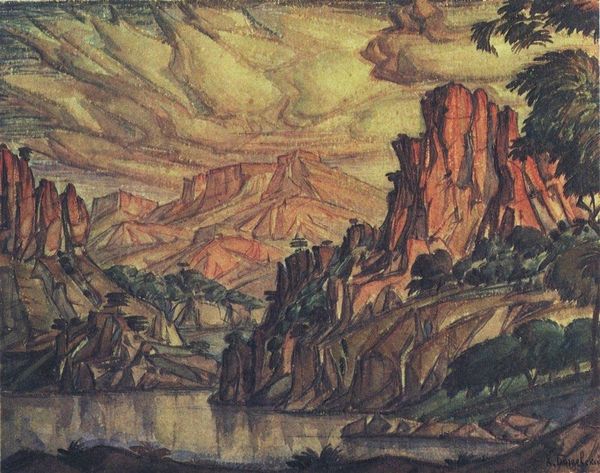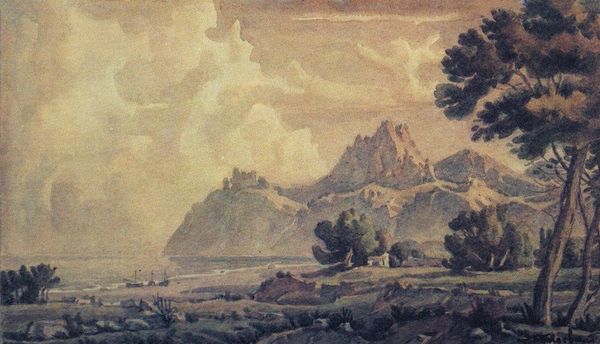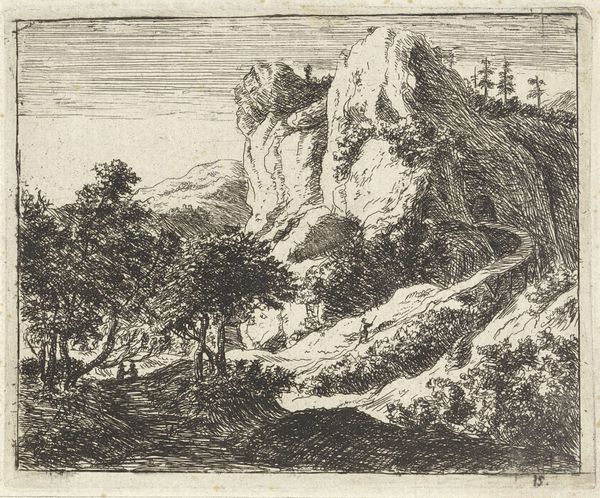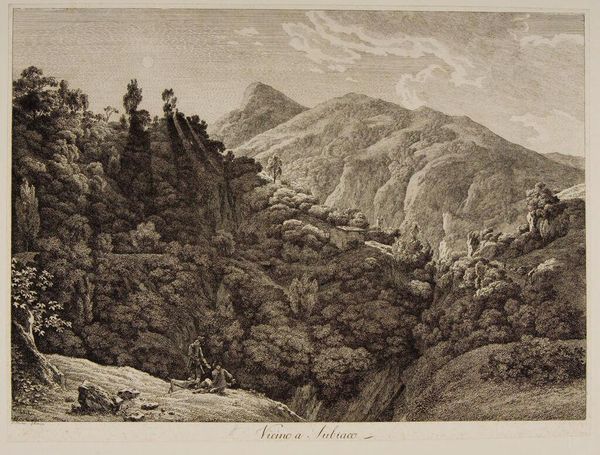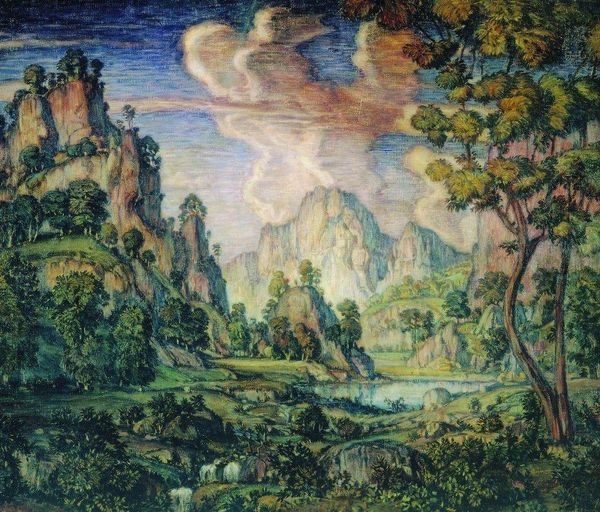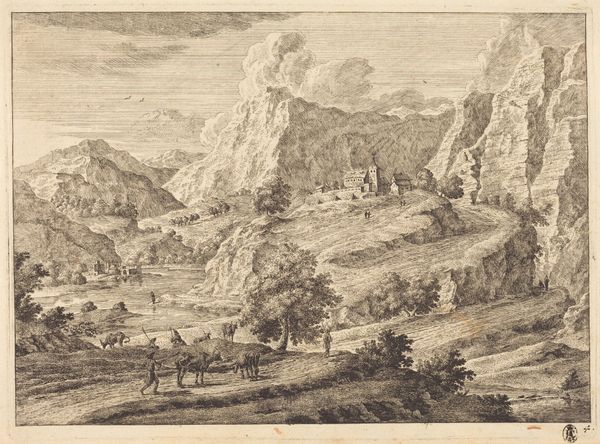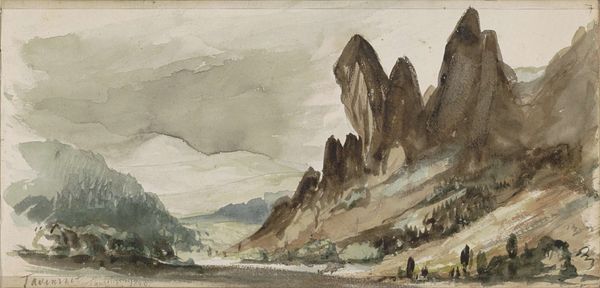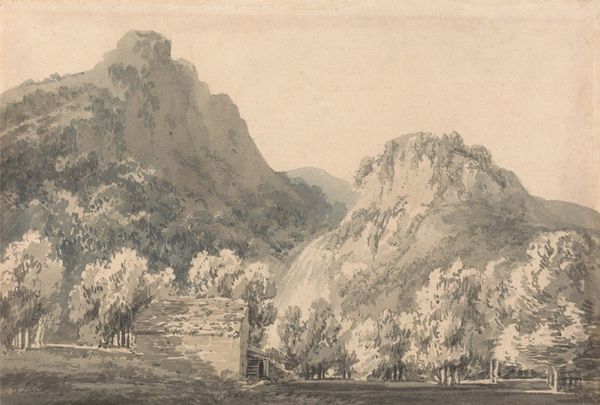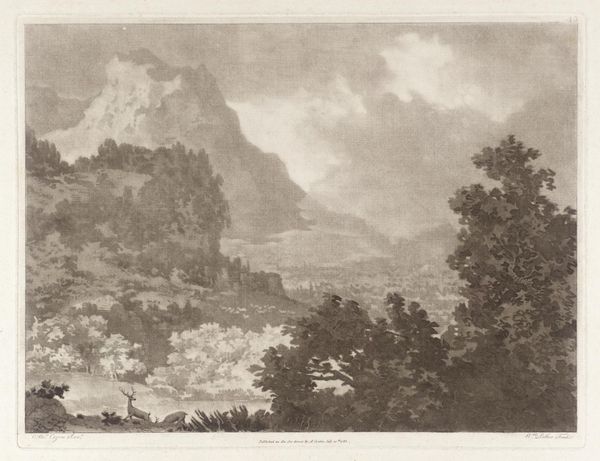
Copyright: Public domain
Curator: Konstantin Bogaevsky created this piece, simply titled "Composition," in 1940. The medium appears to be watercolor. What are your initial thoughts? Editor: There’s an immediate dreamlike quality. The pale earth tones evoke a kind of nostalgia or longing. Those rocky crags feel like ancient giants presiding over the scene. It's very calming, despite the scale of those rock formations. Curator: It’s fascinating how Bogaevsky uses the romanticism style to reflect Russia's historical and social transformation through landscape art, especially given the pressures the artistic community faced during that era in Russia. His style certainly created this image. Editor: Looking closely, those sharp rocks and looming formations strike me as potent symbols of enduring power. Given the cultural and political turbulence of 1940, this enduring quality is striking. Bogaevsky subtly hints at this power. The boats on the left, they speak to resilience, the idea of civilization persisting, however changed. Curator: Yes, the implication of cultural memory is also at play. Bogaevsky's commitment to these Romantic-Realist landscapes was increasingly out of step with Soviet-era expectations. Yet, his artistic voice persisted, a powerful statement in itself. The art historical canon remembers this stance to this day. Editor: It truly conveys a unique blend of tranquility and strength. This blend is captured very powerfully and has persisted for close to a century. Curator: Considering this piece within its socio-political frame helps us appreciate Bogaevsky's quiet resistance. His persistence really stands out given the conditions he faced. Editor: Seeing it now, I find it a potent reminder of art's enduring power to carry emotional and symbolic weight, across changing times. Curator: A perfect note on which to end.
Comments
No comments
Be the first to comment and join the conversation on the ultimate creative platform.
